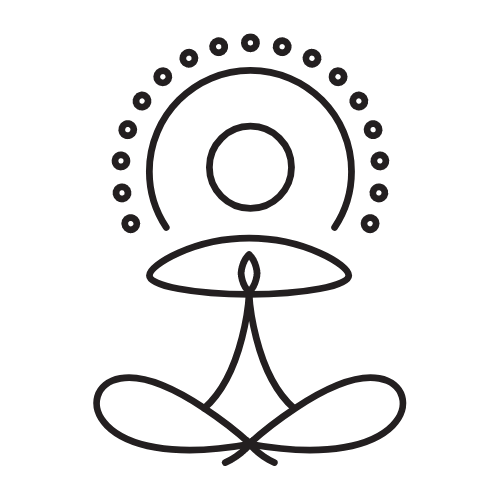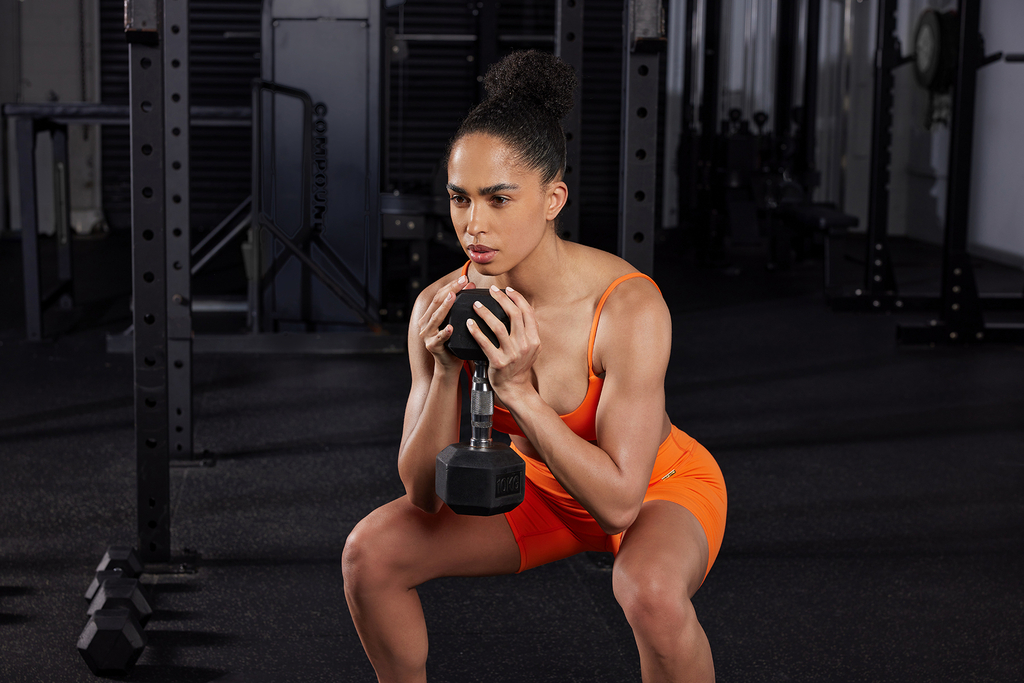It doesn’t matter if the gym is your happy place, you’re a Pilates princess, or you feel your best doing HIIT workouts – chances are, squats feature in your training mix. Three reasons why squats get a huge thumbs up from us, no matter how you like to train:
-
They’re beginner-friendly and you can do them with or without equipment.
-
They’re an incredible compound exercise, meaning they work multiple major muscle groups at once such as your glutes, quads, hamstrings and core. Building muscle mass is an amazing way to improve your health, body composition, and joint and bone health.
-
They’re a great functional exercise, meaning they mimic a movement you do often in daily life and building your strength can improve your overall movement patterns, mobility and injury risk.
There is so much room for progression, whether you’re aiming to lift heavier weights or try more advanced squat variations (pistol squats, anyone?).
Why does squat form matter?
To help you get the most out of every rep, we’ve put together this guide to mastering proper squat form. Getting your form right (especially if you’re planning on adding weights) is so important for your results and your safety.
You want to make sure you’re engaging the correct muscles and avoiding any mistakes that often lead to injury or plateaus in your progress.
How to do a bodyweight squat with proper form
Here’s a step-by-step guide:
-
Find your starting position: Stand tall with your feet about shoulder-width apart. Depending on what feels most natural for your body, you can have your feet facing forwards or slightly
turned out. Pull your shoulders back and down to create that “proud chest” feeling and look straight ahead.
-
Engage your core: Yes, squats are a lower-body exercise, but the stability comes from your core. Think about bracing your abs for a punch to protect your spine and stabilise the movement.
-
Lower into the squat: Begin by hinging at the hips and then the knees as if you were going to sit down onto a low chair behind you, pushing your hips back and letting your knees track out over your toes rather than caving in or bowing outwards. To maintain your posture and balance (we don’t want any hunching!), it can help to bring your hands together in front of your chest.
-
Pause at the bottom: Lower until you’ve reached a depth that feels comfortable for you – ultimately, you’re aiming for your thighs to be parallel with the ground. Don’t worry if your mobility and strength aren’t quite there yet, this will improve with practice!
-
Stand up: Drive through your heels to return to standing, squeezing your glutes at the top without thrusting your hips forward and overextending.
-
Repeat.
Where should you feel it?
You should primarily feel a squat in your glutes (butt) as you drive up with power, as well as your quads (front of thighs) as you lower down, your hamstrings (back of thighs) and core. You shouldn’t feel like you’re straining your back, knees or neck.
Tips for beginners
-
If the movement feels challenging or unstable, feel free to put a chair or low box behind you. This will provide a physical object to guide your movement towards, as well as the mental peace of mind that if you go too low, lose your balance or can’t get up, you can just sit down!
-
If you feel like a squat is testing your balance, you can also extend your arms out in front of you to balance yourself. Find what feels good for your body.
-
Use a mirror or film yourself to see your form and make any adjustments.
Tips for adding weight
-
Once you’ve mastered a bodyweight squat, it can be tempting to pick up a weight that feels challenging, but we recommend starting with something light at first, such as holding one dumbbell or kettlebell at your chest in goblet position, or trying a back squat with an empty barbell.
-
Keep your core braced, make sure your knees are still tracking over your toes (adding weight can make them move in or out) and your shoulders back.
-
Adding weight obviously makes each rep harder, so if you find you’re compromising your form, drop the weight. Form always comes first – your strength will build over time!
-
For weighted goblet squats, keep the weight close to your chest, your shoulders back and your elbows tucked in.
-
For a barbell back squat, the bar should be resting on your traps, not high up on your neck.
Common mistakes you want to avoid
To build strength and avoid injury, here’s what not to do.
Wearing the wrong footwear
Whether you’re doing bodyweight squats or adding weight, stability is a key part of each rep, and you want your feet to be flat. We recommend wearing flat sneakers, lifting shoes, socks or going barefoot over highly-cushioned runners. Running shoes are designed for a rolling motion and usually don’t have a flat sole, meaning you can easily rock back and forth, which is not what you want when performing a squat.
Knees caving in
Letting your knees bend in as you lower down or push up out of your squat is a common error, especially when you add weight and the movement starts to feel heavy. This puts strain on your knees and reduces glute activation. Using a mirror can help to combat this and ensure your knees are tracking over your toes. Placing a resistance band just above your knees can also be a great way to remind you to drive your knees out and engage your glutes if your knees tend to cave in.
Knees going well past your toes
Avoid letting your knees track further than your toes as you squat down. Think hips back and butt back like you’re sitting into a low chair, rather than bending forward into your knees. Looking at your form in a mirror can help here, too!
Moving too quickly
Proper squat form is about the quality of your reps, not the quantity. Moving through squats too quickly can impact your form, increase the risk of injury and reduce the effectiveness of the exercise. It’s vital (especially if you’re a beginner) to slow the movement down, move with control and focus on keeping your body in the correct position.
Heels lifting
At no point in your squat should you be shifting your weight into your toes and letting your heels lift off the floor. This can increase the pressure on your knees and reduce the muscle engagement and power to drive back up out of your squat. Focus on keeping your weight in your midfoot and heels the whole time, or perform squats with your heels slightly elevated on a plate if your ankle mobility is limited.
Not going deep enough
If you’re a beginner, are coming back from an injury or have mobility issues, a quarter or half squat is a great starting point. But for most people, partial reps don’t get a thumbs up from us. You’re aiming for your legs to be parallel to the ground (or as close as you can) to maximise muscle engagement and strength gains.
Back arching or rounding
Maintaining a neutral spine will help to avoid injury and ensure you can safely add more weight. Focus on engaging your core, keeping your shoulders back and your chest out as you move through each squat.
Butt wink is a common form error (as silly as it might sound), referring to your lower back rounding and your pelvis “winking” or tucking under near the bottom of your squat. This means your pelvis goes into a posterior pelvic tilt, which can put excessive pressure on your spine and back – especially if you’re lifting weights. Ouch.
Leaning forward or straining your neck
A squat can feel awkward at first but trust yourself, you don’t need to lean too far forward to keep your balance, and folding forward can actually put stress on your back and reduce quad engagement. Proud chest, eyes up, hips back. You’ve got this.
Not engaging your core muscles
Many people forget to engage their core muscles when squatting. Ensuring your core is braced will help protect your back from risk of injury (especially if you’re adding weights) and give you extra power.
Work out anywhere, anytime with YogaFokus
Ready for your first workout?
Get started
If you’re new to squats, the best place to start is with three sets of 8-12 bodyweight squats, then you can think about adding weight, trying different squat variations or increasing the reps as you get stronger and feel really confident with your form. Take your pick of any YogaFokus program – they all use squat movements in some shape or form!

